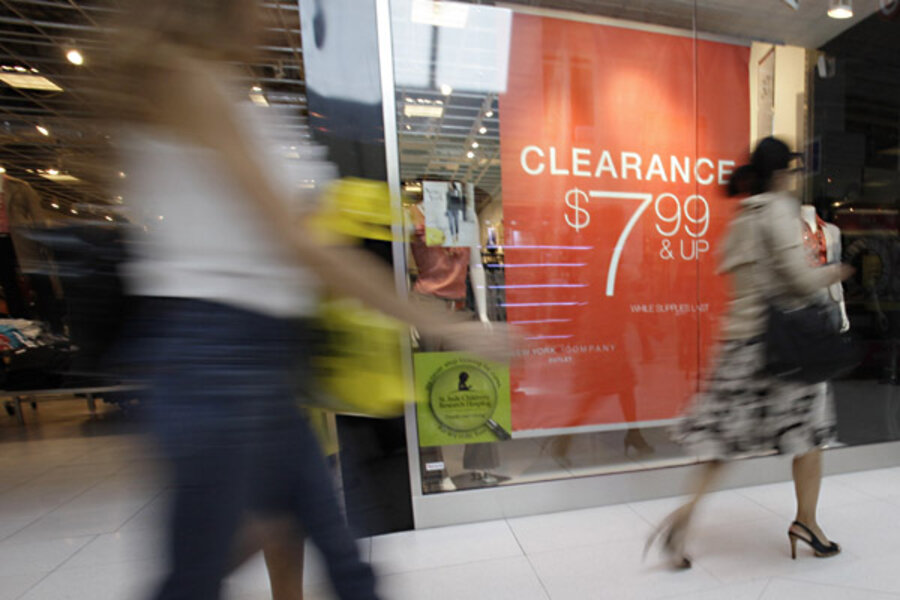Make the most of your outlet store shopping
Loading...
While thrift stores and secondhand stores are my first line of defense when it comes to new clothes, I don’t always find what I need there. I’m very tall with a long upper torso, which means that a lot of shirts just don’t fit me well. They’re either cut for someone who weighs a lot more than I do or they simply aren’t long enough to the point that they reveal my lower back when I’m just standing normally. Neither of these things are really acceptable, so I have to be fairly careful when buying clothes.
There are similar sizing issues for our children. They each have my relatively long torso, which means that children’s sizes sometimes fit them well and sometimes do not. As is the case with me, we have to be a little selective in the clothes we buy them lest they look comically baggy or too short.
If we’ve had a dry run with Goodwill and other highly discounted secondhand shops, we’ll often move up to the next level, which is a little more expensive but adds a lot of options: consignment shops and outlet stores. We use consignment shops and outlet stores primarily as a follow up to stores like Goodwill. In general, prices are higher at consignment and outlet stores than at Goodwill, but it’s easier to find items that match what you’re looking for.
Let’s clarify what exactly we’re talking about here first. Outlet stores typically are an outlet for a particular clothing factory or clothing brand. Usually (and I’ll discuss this more below), they sell slightly flawed versions of normal items – something isn’t stitched right, something has a minor flaw, something has a hole, or something else like that. Because of that flaw, they can’t sell it at normal price, but the flaw isn’t bad enough to make it unusable, and that’s what an outlet store is for. They’ll sell items with minor flaws that are otherwise normal for a discount price.
Consignment shops are typically where high-quality used items are sold on a per-item basis. Usually, someone has a nice wardrobe, takes it to a consignment shop, and the consignment shop picks which items they think will sell. The sale price of the item is split between the shop and the person who contributed the item.
Here are a few tips.
For starters, some outlet stores have the same prices as normal stores – they just put the word “outlet” on the sign to get customers in the door. Sarah and I experienced this firsthand very recently when we visited an outlet center only to discover that most of the stores in the outlet center were barely discounting their prices and seemed to be selling the usual things that would be sold in one of that brand’s normal stores.
Don’t simply trust that a store has bargains just because it says “outlet” on the window. Come equipped with a sense of what the items should actually cost (and don’t be afraid to use any mobile devices you might have to check). If the prices aren’t a bargain, don’t buy.
Consignment shops are generally a good place to look for nicer, dressier clothes. My general experience has been that consignment stores generally don’t bother with items that aren’t pretty nice, though the policies tend to vary from consignment shop to consignment shop. I’ll utilize these as part of my search if I’m looking for nicer clothes for special occasions, but for ordinary wear, I rarely find good items in consignment shops.
In other words, if you’re trying to find a good price on a great dress or a suit, a consignment shop that sells clothing would be a good place to look for a bargain, though, as I mentioned above, consignment policies do vary.
As always, be selective. Just because something is on sale or has a really low price does not mean you have to buy it. Never shop for clothes unless you have a genuine need for clothes or see that need coming in the near future.
For us, consignment shops and true outlet stores are a great place to look for clothes if other resources (clothes swaps, Goodwill, and so on) don’t pan out. The prices are still usually very good for what you find and you’ll often come home with some quality items.
This post is part of a yearlong series called “365 Ways to Live Cheap (Revisited),” in which I’m revisiting the entries from my book “365 Ways to Live Cheap,” which is available at Amazon and at bookstores everywhere.








